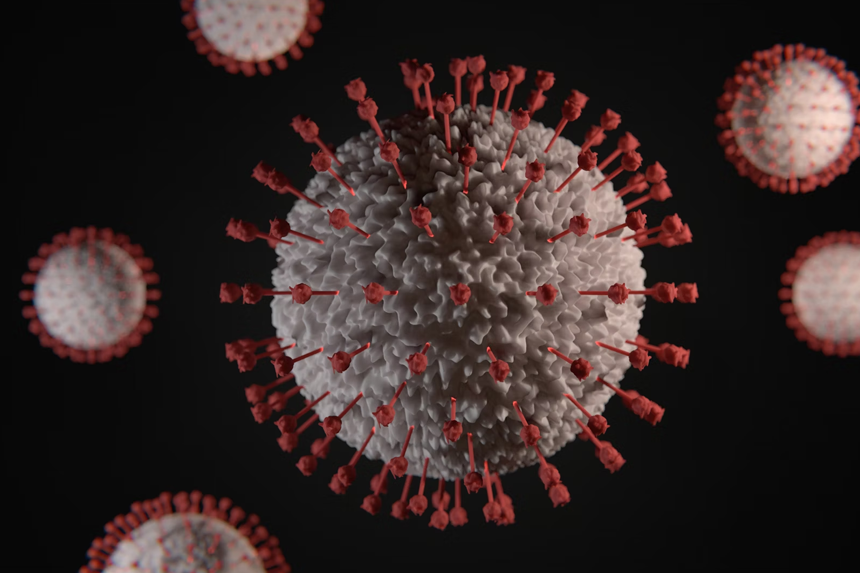Scenes of Chinese hospitals packed with disguised people in recent weeks have raised social media questions about the possibility of another epidemic. Reports of increased human metapneumovirus (HMPV), a flu-like virus causing anxiety, especially in youngsters, drove these questions. Beijing has noted this surge and linked it to a seasonal rise in HMPV infections. Public health specialists have underlined, meantime, that HMPV is not like COVID-19 since it is a virus that has existed for decades, and most children get infected before their fifth birthday. Having been around for years, HMPV is expected to follow the usual seasonal trends in spike.
Why is HMPV regarded as a standard, seasonal virus, and what is it?
Usually generating minor upper respiratory tract infections, human metapneumovirus (HMPV) is a respiratory virus. Most people experience essentially non-threatening symptoms comparable to those of the flu. Initially discovered in the Netherlands in 2001, the virus has proliferated worldwide. HMPV is mainly passed by direct contact between people or by contacting virus-contaminated surfaces.
Most HMPV-infected individuals will likely experience common symptoms like cough, fever, and nasal congestion. “For most people, especially healthy individuals, it is essentially a mild illness,” stated an infectious diseases physician. Still, some groups—very young children, older people, and those with compromised immune systems—are more likely to experience severe problems. Higher activity in colder months helps HMPV to keep expanding worldwide.
Which groups run more risk of severe illness from HMPV?
Although most people bounce back from HMPV without any significant problems, other people experience more severe respiratory symptoms from the virus. Mainly young, especially children under two, the virus particularly affects the very young. Those with weaker immune systems—that is, the elderly or those with advanced cancer—are also more likely to get more severe infections from HMPV.
“In a small but significant proportion of immunocompromised people, the virus can affect the lungs, leading to symptoms like wheezing, breathlessness, and croup,” a medical professional warned. “Many of these patients will need hospital treatment; a smaller percentage risk dying from the infection.” Healthcare systems, particularly in areas with significant HMPV activity, are thus on alert to offer these high-risk groups extra treatment.
Why Do Some Seasons See More HMPV Infections?
Like many respiratory illnesses, HMPV is more common in specific seasons, especially late winter and spring. Given people’s inclination to spend more time indoors, experts believe the virus thrives in cooler environments where it may survive longer and spread more readily. The increase in HMPV cases in northern China corresponds with low temperatures; colder weather will likely last until March.
An epidemiologist believes that the rise in instances is probably a normal seasonal fluctuation in winter. “Although this is worrying, it is not unusual. The higher frequency is probably the usual seasonal rise in winter,” they stated. Since October of last year, health authorities in the United States and the United Kingdom have also recorded increased HMPV cases.
Are HMPV-related pandemic Fears Justified?
Experts have reassured the public that worries of a COVID-19-style epidemic are unfounded despite media coverage and public concern about the increase in HMPV cases. “New pathogens usually cause pandemics; HMPV is not the case,” remarked a public health expert. For decades, HMPV has been present all around. Hence, populations have natural protection from past virus contact.
“By the time a child becomes five, almost everyone will have at least one HMPV infection. We should also expect several reinfections over our lifetime,” they said. Furthermore, reassured by an expert from the University of East Anglia was the absence of evidence of a more major worldwide problem resulting from the present HMPV rise. “So generally, I don’t think there is currently any indication of a more serious global issue,” they stated.
How Should Those At Risk Be Protected?
Although HMPV is not seen as a significant worldwide danger, scientists still advise people—especially those at more risk of serious illness—to follow simple guidelines to lower their chances of infection. The advice calls for proper hand cleanliness, avoiding crowded areas wherever possible, especially for those more likely to have severe sickness, and donning a mask in public places. Furthermore, flu vaccination is indicated since it can guard against other respiratory diseases that might coexist with HMPV.
Given the present increase in instances, public health officials remain alert but wary. Given HMPV’s seasonal character and present immunity in populations, the current increase in cases will likely follow typical winter trends rather than become a worldwide crisis. The fact that HMPV is still everywhere offers some protection for the general population, lessening the possibility of it becoming a more serious worldwide problem.








